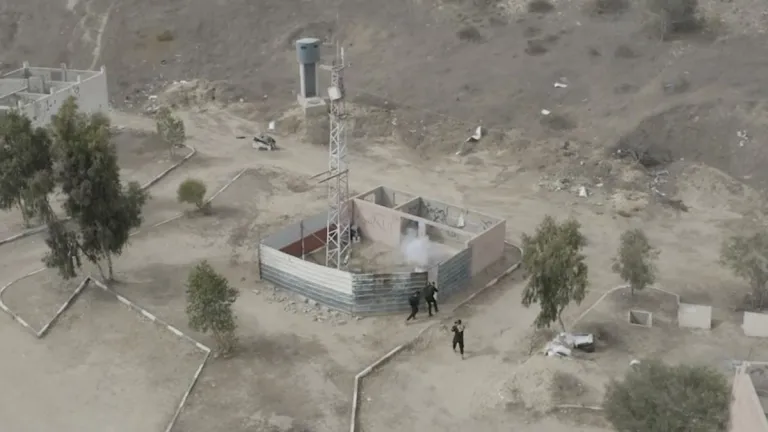Pearl Harbour in 1941. The Yom Kippur War of 1973. The destruction of the World Trade Centre in 2001. The Gaza strip conflict 2023. All have one thing in common. A failure of intelligence to predict the actions of adversaries. What follows is a compilation of potential reasons why a sovereign state might be caught by “surprise”.
Table 1. Reason, Explanation & Instance of Intelligence failures
|
Reason |
Explanation |
Instance |
|
|
|
Hubris |
An overestimation of one’s own capabilities and/ or underestimation of the opponent’s capabilities. |
Gaza strip 2023, based on Israel’s ‘easy’ victory after being caught off guard by-, and subsequent victory over- Egypt in 1973. |
|
|
|
No analysis & evaluation |
Failure to analyse intelligence, from multiple perspectives, and to fact check it |
Israel – Yom Kippur War 1973. Mossad was the only intelligence agency involved, it only collected, and did not analyse [correlate, evaluate and determine consequences] of the intelligence it had collected |
|
|
|
Hoarding |
Failure of agencies to share intelligence, correlate findings and pass on intelligence |
World Trade Centre 2001 – CIA, FBI and police – CIA had credible intelligence on AL Qaida activities in the continental United States prior to the attack, but it did not share it with any other agency Pearl Harbour 1941– US Naval Intelligence failed to share its findings with the White House, citing that the intelligence organisation was very costly to run, and that sharing it risked leaking the fact of the existence of an intelligence gathering organisation to the enemy, thus naval intelligence was not passed on to the White House |
|
|
|
Denial |
Discounting/ intentional denial of facts/ hard data, and wariness of ‘boy who cried wolf’ warnings |
Yom Kippur War – 1973. Israel’s top intelligence source in Egypt, Ashraf Marwan, had twice before passed on credible intelligence to his handler that Egypt was about to strike. By the third time he passed on this information, the Mossad had grown wary, and discounted the intelligence |
|
|
|
Complacency |
Collective amnesia – forgetting that your opponent wants to destroy you |
Gaza strip 2023 – There was a prevailing opinion in Israeli government and military circles that Hamas had softened its outlook. |
|
|
|
Technological superiority |
Over-reliance on state-of-the-art technology |
Gaza strip 2023 – Electronic surveillance towers, automated OPs and scant manning, instead of human eyes. Electronic eyes are more readily fooled. |
|
|
|
Technological advances |
Underestimating the capabilities of new technologies |
Gaza strip 2023 – Employment of commercial off-the-shelf technology - drones and paragliders to defeat obstacles |
|
|
|
Blind to own weaknesses |
Failure to assess one’s own targetable critical vulnerabilities |
Gaza strip 2023 – unmanned surveillance towers were the lynch pin of The Obstacle [border wall] and were readily rendered ineffective by drone delivered explosives |
|
|
|
Incorrect assessment of own strengths |
Failure to upgrade/ update defences against present day threats |
Gaza strip 2023. No consideration given to threat of drone attack |
|
|
|
Distraction |
Shift of focus away from security of the state |
Israel -Hamas 2023 – West Bank settlements drew Israeli Security Minister’s focus away from his portfolio in the years leading up to the Hamas assault |
|
|
|
Politics |
Dominance of ideology over empirical data |
2003 – Invasion of Iraq on the pretext of presence of WMDs, despite the warnings of UN inspectors to desist based on a lack of evidence. |
|
|
|
Over-reliance on non HUMINT sources |
Lack of input from HUMINT sources – limited to no infiltration of adversary organisation |
Gaza strip 2023. Israeli intelligence historically had extensive infiltration capability and human intelligence [HUMINT] sources, however, this appears to have waned in favour of electronic intellingence [ELINT]/ remote surveillance |
|
|
|
Success |
Failure to keep INT successes secret, enabling EN to develop countermeasures |
Gaza strip 2023 Israeli intelligence agencies publicised their successes, giving Hamas Israel’s intelligence playbook, to analyse and develop effective countermeasures and signature management procedures |
|
|
|
Historical precedent |
Using past action as a guide to future action. |
[The adversary is highly unlikely to use the same tactics twice] |
|
|
|
Force fitting data |
Fitting outlying data into a pre-emptive conclusion rather than examining the reasons why it is an outlier |
World Trade Centre 2001 Prior to the strike, the CIA had known that there were two Al-Qaida operatives in the country, but because the overwhelming ‘groupthink’ conclusion – that Al-Qaida would “never” conduct an operation on the continental United States, it wasn’t considered anomalous |
|
|
|
Timing |
Information arriving too late to make a timely judgement |
1973 Yom Kippur War – by the time the critical information had arrived from sources to the Knesset, the Israeli government only had 8-10 hours to act by which time, it was too late to mount an effective counter offensive |
|
|
|
Ignoring public domain sources |
Failure to heed the indicators published in the public domain |
Gaza strip 2023 – Videos of Hamas operatives conducting urban breaching and assault of full scale models of targets were published weeks before the actual assault Syria 2015 – Russian aides and their families were withdrawn from Syria prior to direct Russian military involvement with the Assad regime |
|
|
|

|

|
|||
|
The sinking of USS Arizona – Pearl Harbour 1941 |
An IDF M60 fires at Egyptian forces, Golan Heights 1973 |
|||

|

|
|||
|
The strike on the World Trade Centre, New York 2001 |
Hamas combatants train to bring down surveillance towers, Gaza, 2023 |
|||
Information hoarding leads to a dysfunctional security condition
It took the events of the destruction World Trade Centre for US agencies to start sharing information. There are seventeen agencies, divided among federal, state, territorial, international, domestic, military and civil jurisdictions. They are now centrally co-ordinated and managed, and they share information and intelligence between them.
Conversely, nations such as the UK has had a history of sharing information between its various foreign, domestic, civilian and military agencies.
Every high tech capability has a no-to-low tech antidote
In terms of pure technological asymmetry, there are notable instances where faith in technology prevailed over commonsense, and adversaries armed with basic weaponry defeated a technologically superior force. Or put simply – what the human mind can create, the human mind can destroy.
Peasant rice farmers organised to defeat the United States in Vietnam in the 60s. By developing earthworks and entire cities at underground depths that multiple 500 lb bomb impacts could not penetrate, their networks could withstand relentless carpet bombing. They had figured out survivability.
Goatherds defeated the mechanisation, manpower and might of the Red Army in Afghanistan over a decade in the 80s. They fought on open plains, as well as by using the advantage of elevation overlooking narrow roads winding through mountainous terrain. [Admittedly, with limited materiel and training from the West]. Soviet casualties were 15,000 dead and 35,000 wounded over a decade.
Al Qaida flight crews – pilots, navigators and flight engineers, unwittingly trained by the West, took control of two airliners, effectively turning them into missiles, flying them into the World Trade Centre in 2001, precipitating a two decades long war in the Middle East.
Command pull operated improvised explosive devices [IEDs] [IEDs themselves are a highly evolved but low tech response to technologically superior armoured fighting vehicles] have overcome electronic countermeasures intended to prevent radio-telephone controlled detonation.
Hamas trained for an assault breach on the Gaza border wall, below the Israeli ISR threshold, using hybrid conventional and unconventional tactics as well as high and low technology, in 2023.
Technological advances enable asymmetric warfare to spread globally
Everyday Ukrainian citizens rewrote the use of commercial off the shelf [COTS] drones to provide intelligence, surveillance and reconnaissance [ISR] and attack capability, to stymie the advance of modern Russian armour and infantry, since 2022. This tactic of using observation, ‘suicide’ drones, and re-usable drones to deliver mortar bombs or grenades has been widely shared on social media, and copied across the world.
This raises another observation, that which is available to our own forces is available, at perhaps a lesser scale and capability, to our adversaries. A COTS drone can’t fire a Hellfire missile to neutralise armour, but dropping a grenade through the open hatch of an infantry fighting vehicle can result in a casualties, and a mobility kill, significantly degrading capability.
We don’t learn from history
History appears to teach us the inappropriate lessons. On the adversary front, we predict that adversaries’ future actions will reflect their prior actions. There are sufficient data points to refute this, but as a collective, we fail to learn.
Considering our own side, defensive thinking becomes sclerotic, and we believe that the adversarial threat remains static. Therefore we conclude that the tactics our side employed decades ago will remain effective in the present day. We fail to anticipate how adversarial TTPs have evolved, and the implications for our defense and survivability.
Obstacles are of limited effectiveness
Ask any experienced Sapper and they’ll tell you: obstacles, are only effective if they’re covered by observation and fire. We’re learning that there are caveats to this well established principle.
Observation should be direct, by human eyes, rather than indirect and automated means.
Why? Because a machine [including artificial intelligence] regardless of its degree of sophistication, can only solve a problem or recognise a set of conditions within its programmed parameters, based on its learning algorithm of prior instances.
The most unsophisticated of humans can think outside those limits and recognise a new problem, or an anomaly, and develop a new solution. It’s what has ensured our survival. AI, with its computation speed of at least four orders of magnitude beyond humans, cannot reach a solution if it doesn’t recognise the problem in the first place, no matter how fast it can compute.
In the present day, fire has to be effective both against ground and aerial targets in the form of small unmanned aerial vehicles [UAVs].
But as we are also taught in military engineering, all obstacles are defeatable, and are optimally attacked at their weakest points. Obstacles act only to slow the rate of advance, not halt it.
Every experienced Sapper also knows that against a determined adversary, there are no truly effective obstacles.
Closing notes
Our adversaries never sleep. They watch our every move, media release and success story.
They look for weaknesses and the minutest cracks in our defences, that can be exploited. They adapt, discard, reinvent and refine their TTPs and make use of unconventional means in combination with classic or bespoke tactics.
Because some of our adversaries may not be as well funded as our own forces, by necessity, they work within their means, making use of absolutely everything at their disposal.
They use our own perceived strengths against us. They also use our own belief systems, our egos, politics, our rules and laws, our divisiveness, institutions, reward systems and public perceptions against us.
Warning, cliché ahead – they lull us all into a false sense of security. Our adversaries are neither static nor ‘stupid’, quite the contrary, they are observant, analytical, clinical, cunning, dynamic and devious.
They are entirely capable of conducting that which our own forces consider ‘unthinkable’. Their thought processes are unconstrained, limited only by their imagination.
They never lose sight of their intent – which is, to defeat us.
For our own security in the future, the price of freedom is eternal vigilance. But it must necessarily be combined with continuous adaptation and evolution, discarding yesterday’s solutions where appropriate, then figuring out what tomorrow looks like.
There are likely to be further instances of the failure to heed intelligence in the future. However, one hopes that they occur for different reasons from the ones outlined above. To be human is to be flawed, but to be human is also to learn from our mistakes.